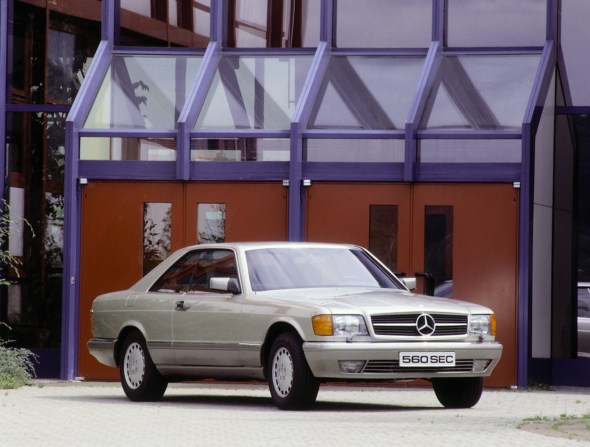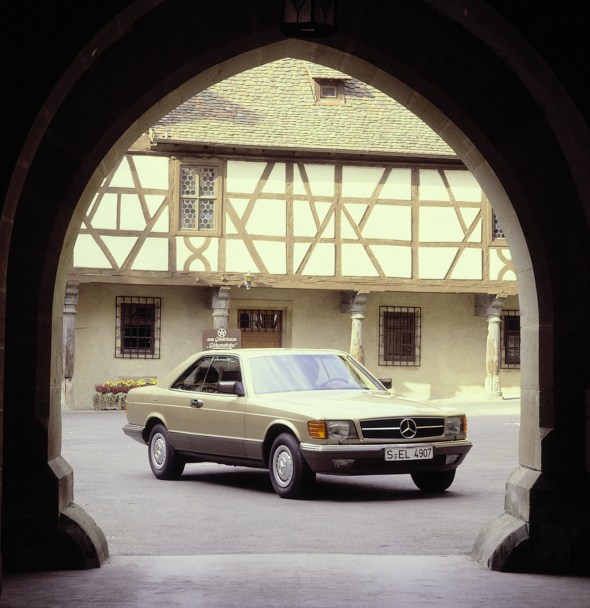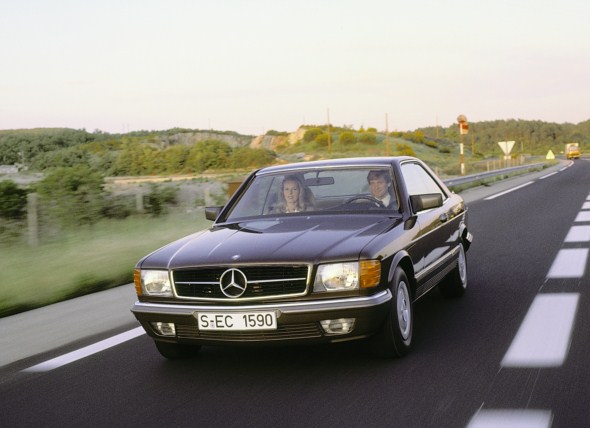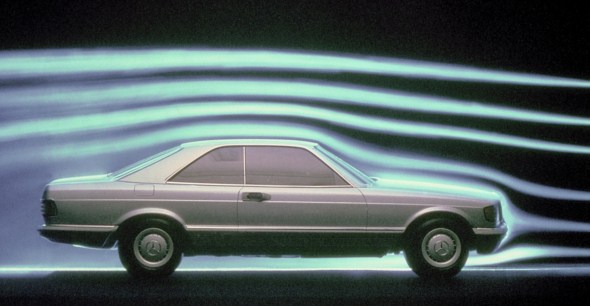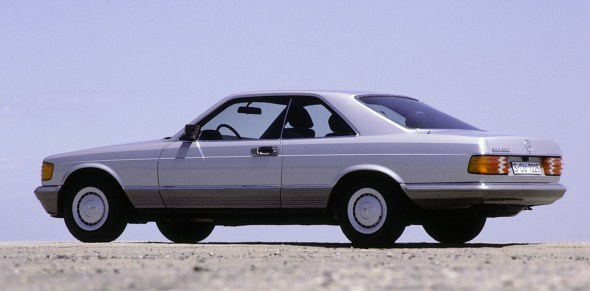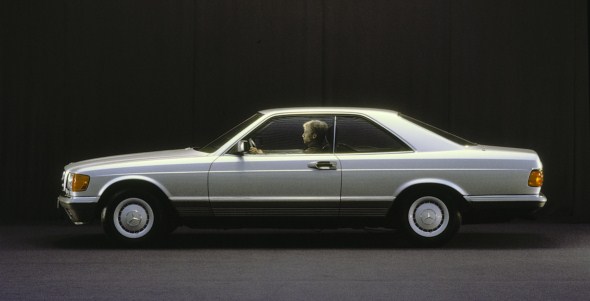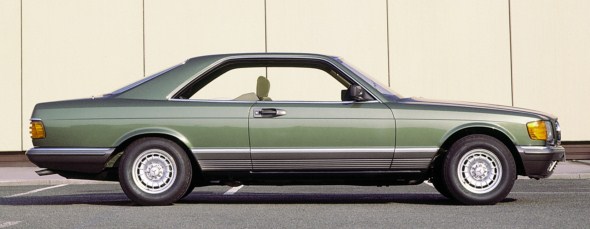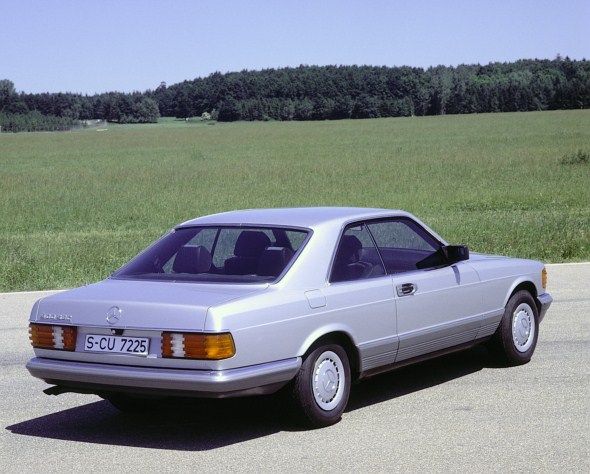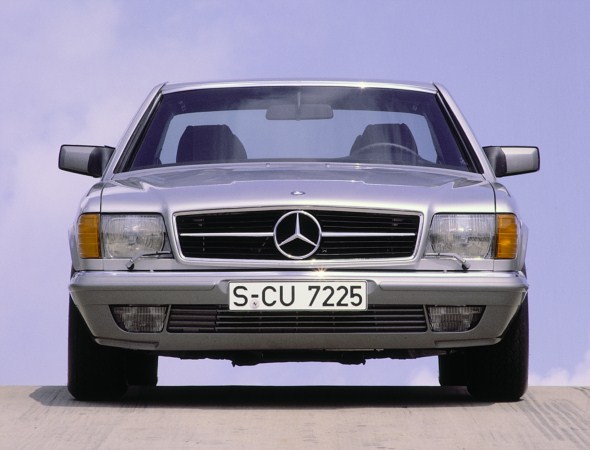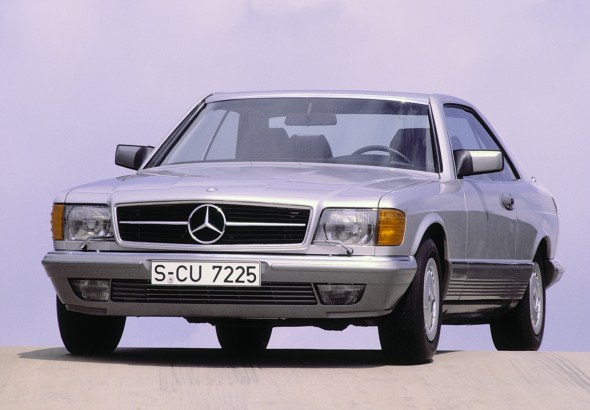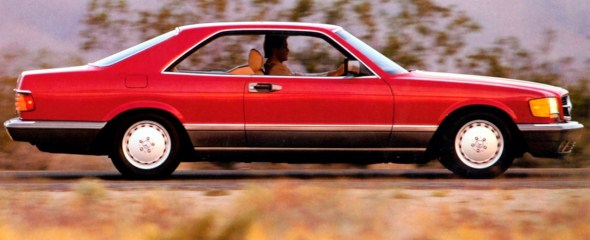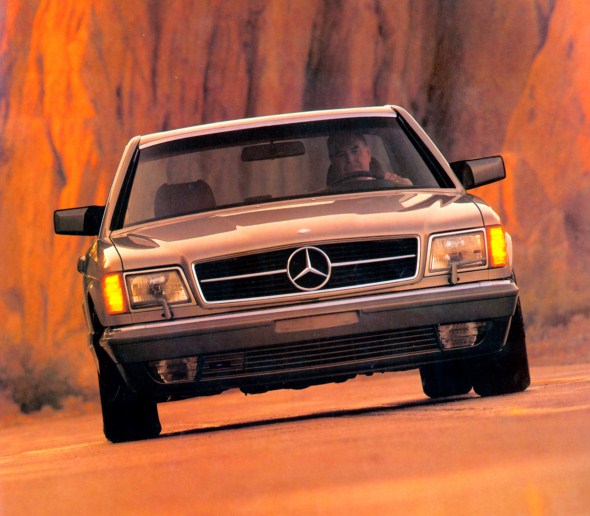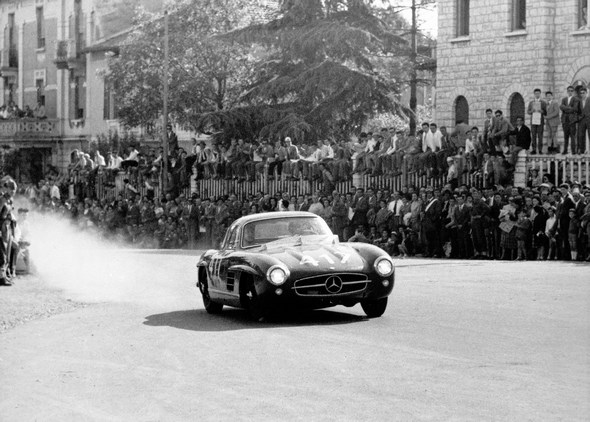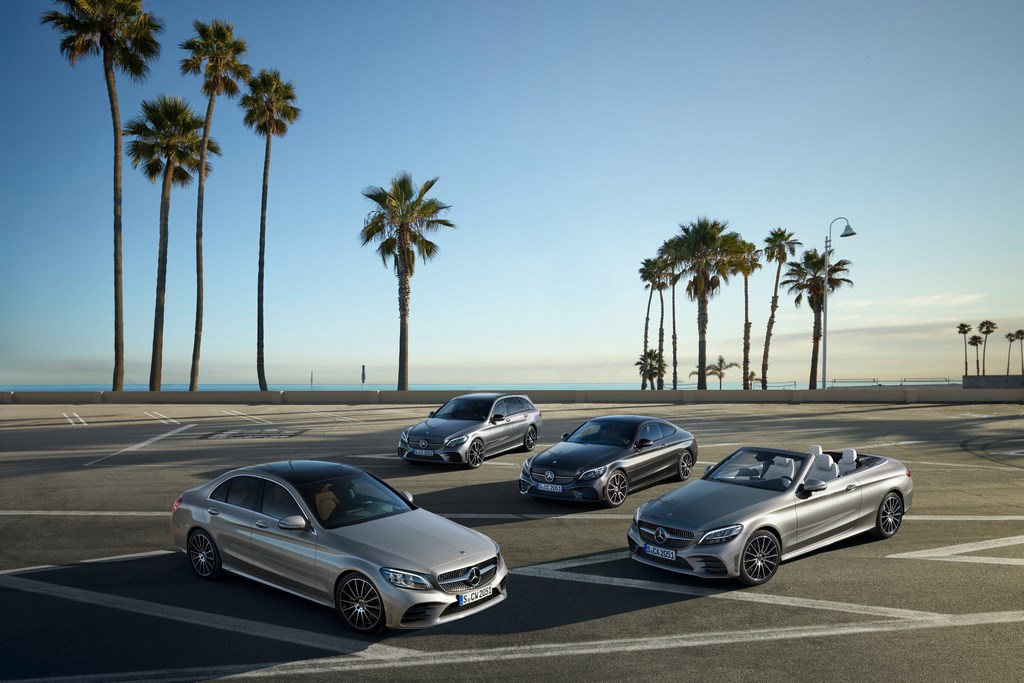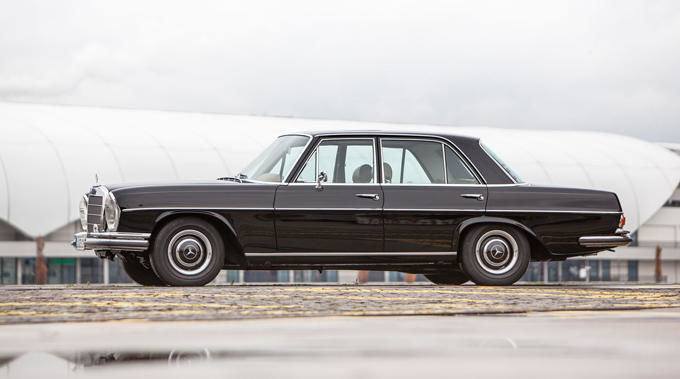Modern classics: the Coupés of the Mercedes-Benz 126 series (1981 to 1991)

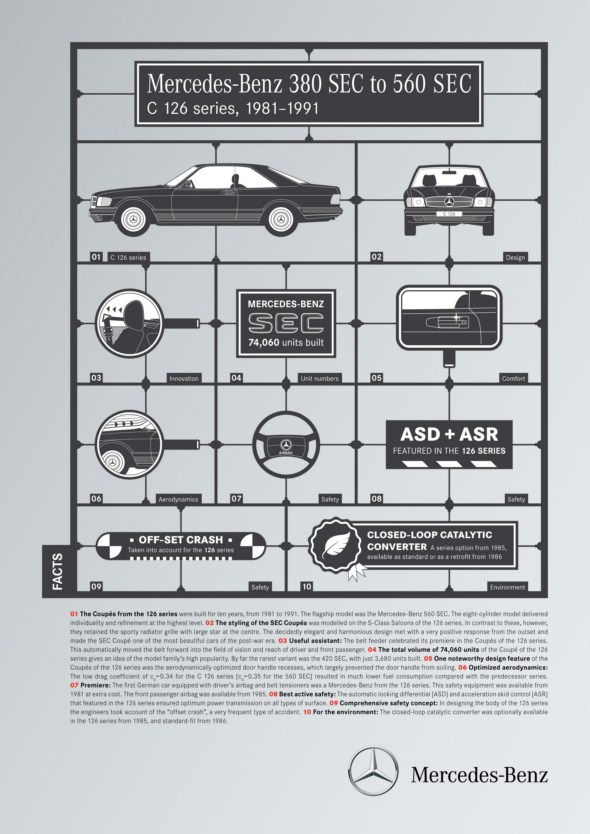
- Still attractive and desirable
- Innovation studies of their day
- High value retention as modern classics
Stuttgart – Mercedes-Benz Coupés have always embodied elegance on four wheels. And exclusivity besides, since the vehicles attract a clientele that consciously opts for a body form with flowing lines, the classic two doors and who to a certain extent see their vehicle as a logical extension of a lifestyle often characterised by beauty and elegance.
These fundamentals also applied to the SEC Coupés of the C 126 series, which Mercedes-Benz presented at the Frankfurt International Motor Show (IAA) in September 1981. They were based on the S-Class Saloon of the 126 series, with a frame/floor assembly shortened by 85 millimetres. Nevertheless, the Coupés were fully-fledged four-seaters.

Their design rendered them unmistakable: Bruno Sacco, then Head of Design, gave the vehicles the perfect lines of the day and also integrated them harmoniously into the Mercedes-Benz passenger car range. For example, he revived the horizontal radiator grille with large central star which had been a feature of the large Mercedes-Benz Coupés and the legendary 300 SL Gullwing Coupé since the 1950s. All things considered, the Coupés of the C 126 series were a tour de force in terms of design, retaining even today an air of timeless elegance and desirability.
The elegant looks of the Coupés were coupled with exclusive equipment, powerful engines and optimum safety – resulting in an experience that offered comfort from every facet of automotive design. Even the longest journeys could be effortlessly undertaken in the Coupé, thanks to its sophisticated chassis – which apart from a few details was identical to that of the S-Class – the ergonomically designed and elegant interior and the drive system. The Coupés were available exclusively with eight-cylinder engines. Initially there were two models, the 380 SEC and 500 SEC. The model refinement package in 1985 saw the 380 SEC superseded by the 420 SEC, as well as the arrival of a modified version of 500 SEC and – the most spectacular newcomer – the 560 SEC. The model refinement package also saw the introduction of emission control systems with a closed-loop three-way catalytic converter.
In terms of safety technology the Coupés of the C 126 series were state-of-the-art. The body was designed in line with latest safety research findings. One noteworthy equipment detail was the electrically operated belt feeder, which was a standard-fit specification on the SEC models. Optionally available were also an airbag for the driver and belt tensioner for the front passenger. The front passenger airbag was available from 1985. Optimum active driving safety was guaranteed by systems such as the automatic locking differential (ASD) or acceleration skid control (ASR).
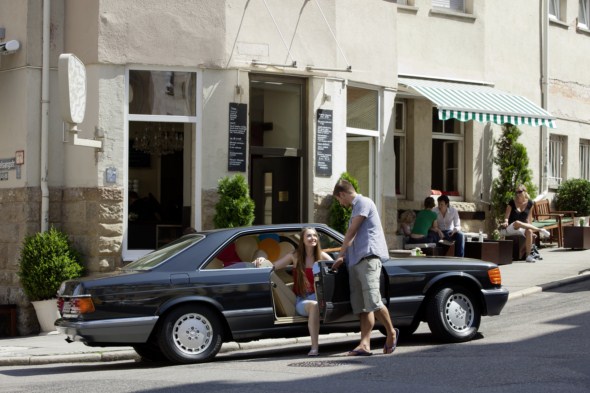
Value retention as opposed to depreciation
The range of Coupés sporting the desirable SEC abbreviation in the model designation is extensive. Although most of them are by now older vehicles, it is not unusual to fine well maintained examples. Moreover, high mileages are no problem for the regularly maintained eight-cylinder engines.
But there are also vehicles available with a manufacturer’s warranty: Mercedes-Benz Young Classics regularly offers vehicles in above average condition and which are therefore supplied with a warranty – an offer unique in the automotive industry.
Those who today drive a Coupé of the C 126 series as a modern classic are sure to appreciate aspects such as its outstanding everyday practicality, high level of ride comfort, elegant appearance and exclusivity. An additional bonus is that with correct maintenance and good care it will at least retain its value and eliminate depreciation. In many cases, the value of the vehicle even rises over time.
Mercedes-Benz’s excellent spare parts supply has helped maintain a modern classic: almost every part can be procured through a Mercedes-Benz dealer and the company’s own ordering system; delivery is usually made overnight. Some authorised service shops have even been designated Classic Partners, possessing outstanding competence in handling older vehicles. Not for nothing does the slogan “Service for a lifetime” apply to all vehicles of the brand.
Production of the Coupés of the C 126 series was stopped in 1991, almost exactly ten years after the market launch. The total volume of 74,060 units built gives an impression of the model family’s high popularity. The best-selling model was the 500 SEC with 30,184 units. Clearly the rarest version was the 420 SEC with just 3,680 units. Regardless of engine type, each individual vehicle is a legend of its time.
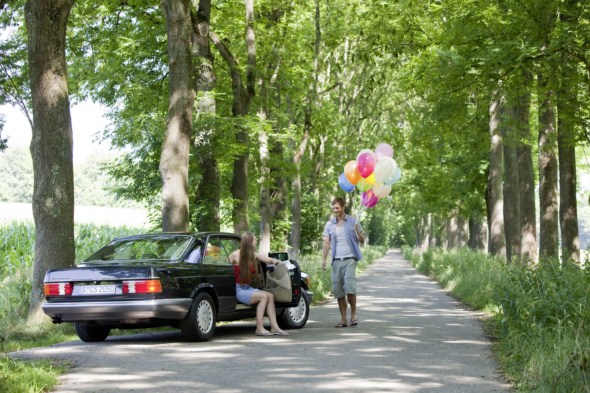
Model history: the C 126 series (1981 to 1991)
- Closely related to the S-Class Saloons (126 series)
- Catalytic converter technology becomes an integral part of exhaust system
- Rarest variant is the 420 SEC – just 3,680 units built
“By tradition, Mercedes-Benz has always been building a special type of car which is distinguished from other models series by its high level of individuality: the Coupé.” These were the introductory words in the brand’s brochure about the Coupés from the C 126 series. “The Mercedes Coupé embodies the rare type of a refined and sporty automobile. Its sporty character does not mean that the car has to do without comfort and safety. On the contrary, its sporty attributes combine with all those qualities which distinguish every Mercedes. The new Coupé is a car in which you can cover part of your path of life in the most sophisticated style.”
At the Frankfurt International Motor Show in September 1981, Daimler-Benz presented the 380 SEC and 500 SEC Coupés. The new generation of Coupés was again based on the S-Class Saloon rather than an SL as in the case of the SLC models. A six-cylinder-engined version analogous to the 280 SLC was no longer available. The V8 engines – already introduced in the Saloon and SLC models – had been thoroughly revised as part of the “Mercedes-Benz Energy Concept” with the aim of reducing both fuel consumption and pollutant emissions.
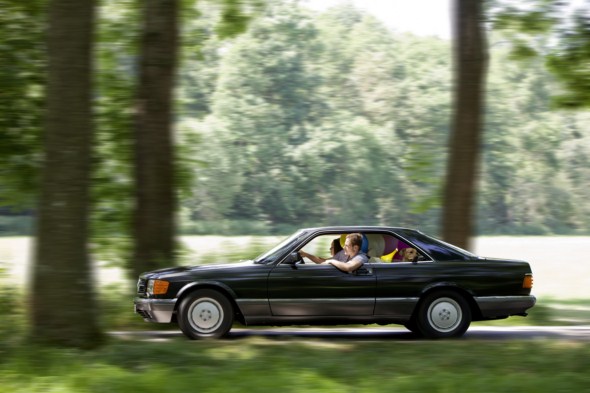
The list of improvements included a rise in the compression ratio, camshafts with modified valve timing, air-bathed injection valves and electronic idle speed control. Due to the modified camshaft tuning, the maximum torque was now reached at lower engine speeds and, in the case of the 3.8-litre engine, even raised.
The latter engine had been modified particularly thoroughly: to achieve a more favourable volume-to-surface ratio, the bore had been reduced and the stroke increased. As a result, the modified 3.8-litre V8 had a slightly larger displacement. In the case of both eight-cylinder engines, substantially improved economy was achieved at the expense of slight reductions in performance. The rear axle ratio was adapted to the changed characteristics of both engines. The sum-total of all modifications clearly reduced the fuel consumption of the SEC Coupés as compared to their predecessor models.
Sophisticated suspension for enhanced comfort and safety
With the exception of detail modifications, the suspension was identical with the basic Saloons. Like the latter, the Coupés were equipped with a double-wishbone front axle and a semi-trailing arm rear axle with anti-squat control. For the first time, the SEC Coupés featured floating-calliper disc brakes on the front wheels, permitting the use of larger brake discs as well as the location of the brake cylinders on the inside of the wheels where they were cooled more effectively.
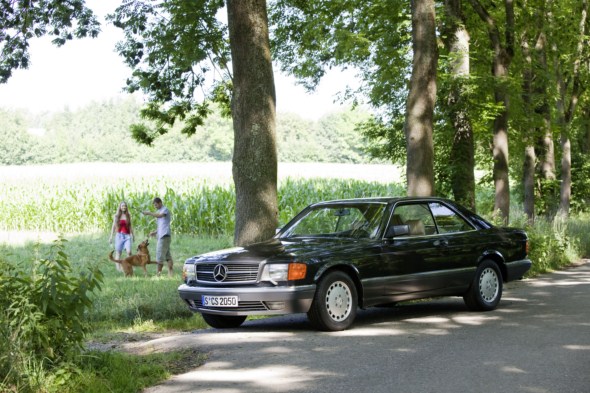
The frame/floor unit was also taken from the Saloon, albeit shortened by 85 millimetres. The wheelbase was thus 30 millimetres longer than on the predecessor series and the passenger compartment appreciably more spacious. The bodywork was designed on the basis of the latest findings in safety research – supported by expedient measures which had already been applied in the Saloons: to compensate for the non-existing central pillars, the roof frame structure was improved and the A-pillars were strengthened with welded-in high-strength tubing. As a result, the Coupés lived up to the same high safety standard as the S-Class Saloons. An interesting equipment detail were the electrically operated belt feeders which formed part of the standard specifications of the SEC models and had the task of moving the seat belt into the field of vision and thus within easy reach of the driver and front passenger. In addition, an airbag for the driver and a belt tensioner for the front passenger were optionally available.
The styling of the new Coupés was equally modelled on that of the four-door models but still included the horizontal radiator grill typical of the SL – a relic from the SLC era in a way. The decidedly elegant and harmonious styling met with highly positive response right from the start: the SEC Coupé was one of the most beautiful cars of the post-war time. The two bumpers and the protective side strips were designed in the same way as on the Saloons; the front apron reached further down and accommodated the fog lamps. A remarkable design detail was the aerodynamically optimized door handle recess which largely prevented the door handle from soiling. In any case the vehicle’s aerodynamics were optimised as a whole for lower fuel consumption. This left the drag coefficient for all models of cd=0.34. The only exception to this was the 560 SEC model, where the value was cd=0.35 on account of its wider tyres.
Discreet facelift and new engines
Four years after the presentation of the SEC Coupés, both the S-Class Saloons and the Coupés were extensively refined and introduced at the Frankfurt International Motor Show in September 1985. Apart from a discreet retouching of the exterior – primarily of the bumpers, the protective side strips and the wheels – the engine range was restructured.
A new engine in the range was a V8 with a displacement of 4.2 litres, created by drilling out the 3.8-litre unit and replacing the latter not only in the SEC Coupé but also in the S-Class Saloon and in the SL. The five-litre engine was equally modified and equipped with electronic ignition and an electronically/mechanically controlled KE-Jetronic injection system from Bosch to develop an output of 180 kW.
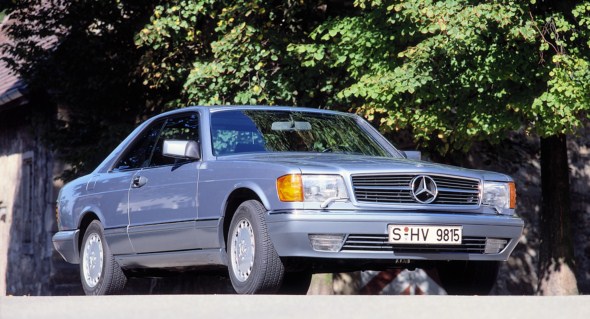
The most spectacular novelty in the engine range was a 5.6-litre eight-cylinder which had been developed from the five-litre V8 whose stroke had been lengthened to give the car an output of 200 kW. A version with an even higher compression ratio was optionally available and generated a proud 221 kW, but could not be combined with a closed-loop emission control system. However, even without a catalytic converter, this so-called ECE version complied with the emission limits specified by the European Economic Commission (ECE). At the time of their launch, the 560 SEC and 560 SEL with this engine were the most powerful Mercedes-Benz production cars built until then.
Catalytic converter optionally available
For all variants of the revised engine range – with the exception of the ECE versions of the 560 SEC and 560 SEL models – a closed-loop emission control system with three-way catalytic converter was optionally available. The standard version was prepared for the retrofitting of a catalytic converter, meaning that the car was supplied without a catalytic converter and oxygen sensor but with a multi-functional mixture formation and ignition system. A closed-loop catalytic converter could be retrofitted at any time and without a problem. This solution gave the customer the greatest possible flexibility in determining the point in time for the conversion – a major advantage in view of the fact that unleaded fuel was not yet available throughout Europe. From September 1986, the closed-loop catalytic converter formed part of the standard specifications of all
Mercedes-Benz passenger cars with gasoline engines; the versions for retrofitting remained optionally available until August 1989 – at a correspondingly reduced price.
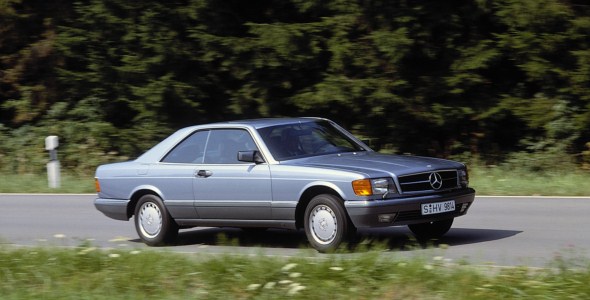
The chassis of the refined models had not been modified to any major extent. However, the rear-axle design had been modified in several details in order to improve ride comfort and the smooth running characteristics still further. Apart from that, all Coupés and Saloons from the 126 series were now equipped with 38.1 cm wheels and correspondingly larger brakes. The styling of the optionally available light-alloy wheels, which were standard only on the 560 SEC and 560 SEL, was updated and adapted to that on the compact and mid-sized series.
Functional design
The remaining stylistic modifications on the improved models of the 126 series were made not only for the purpose of updating the design but also for substantial technical reasons. With front aprons extending far downwards, lift forces were further reduced, and the air outflow at the rear improved. It was thus possible to increase road-holding stability at high speeds still further – an aspect that was significant especially in view of the performance of the new 560 SEC and 560 SEL top models.
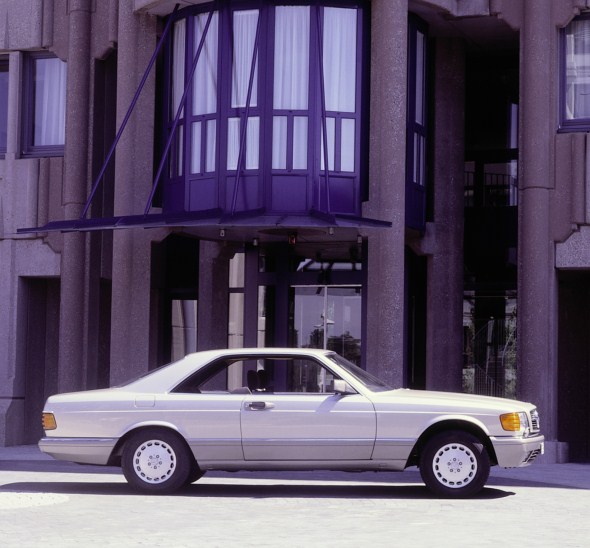
The protective side strips were smooth-surfaced now rather than being ribbed as before; like the bumpers, they extended further downwards and featured additional frame side member cladding. As the 5.6-litre models differed from their less powerful sister models in that they were fitted as standard with wide tires in size 215/65 VR 15, the front apron and the fender beading were modified in their shape to ensure the required lateral clearance for the front wheels.
In September 1987, more powerful versions of all V8 engines were introduced. The compression ratio of all units was raised to 1:10, and additional measures were taken to boost the output by six to ten percent, depending on the model. The boosting effect was even more substantial for the engines with catalytic converters; by optimizing the emission control system, the engineers had succeeded in significantly reducing the losses in output caused by the catalytic converter. The ECE version of the 5.6-litre V8 was omitted after the retrofitting variant had been upgraded to generate 221 kW.
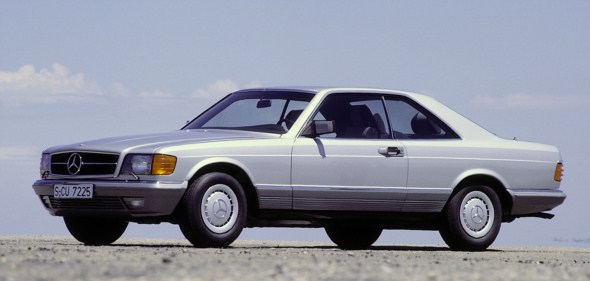
In September/October 1991, almost ten years after the market launch of the SEC Coupés, production was discontinued. The total volume of 74,060 units built gives an impression of the model family’s high popularity. Clearly the rarest version was the 420 SEC with just 3,680 units.
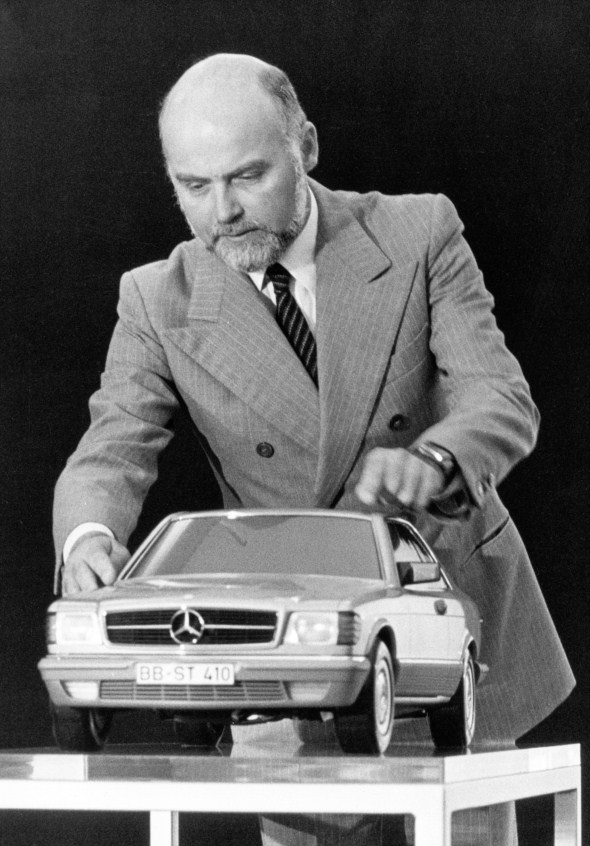
Production figures for the Mercedes-Benz C 126 series (1981 to 1991)
Model Internal designation Production period
Preproduction to end Number of units
380 SEC C 126 E 38 1980 – 1985 11,267
500 SEC C 126 E 50 1980 – 1991 30,184
420 SEC C 126 E 42 1985 – 1991 3,680
560 SEC C 126 E 56 1985 – 1991 28,929
560 SEC (ECE version) C 126 E 56 1985 – 1987 *
Total 74,060
* not documented separately
